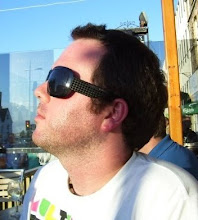In the last few weeks I have travelled to the four most important cities in the country: Pretoria, Johannesburg, Durban and Cape Town. (Ja you Bloem and PE okes keep it down).
Being away for two and a half years makes it easier to see differences in South Africa from then until now. This is not a new philosophy – if you watch our hair grow you will never think it is getting longer – stop watching it for a year and then see where it’s at.
And with this kind of perspective, I want to hand out massive kudos to Pretoria, which I feel is the most black-empowered city in the country. As much as people may disagree with the BEE and AA philosophies, we do know that South Africa’s future rests upon black empowerment, and empowered black people is a superb sign that we are heading the way of a non-racial democracy, which was kind of what we were aiming for when de Klerk managed to cross the Rubicon at the second NP attempt. Note that I mean black empowerment, not white disempowerment.
A few weeks ago I went to meet up with some buddies on the other side of the Boerewors curtain in Pretoria. I was due to meet them in a shopping centre there and as I strolled through I was amazed at the amount of empowered black people shopping. Understand that by “empowered” I mean earn enough to have cars, actually be a customer in a fancy clothes shop or restaurant, piss money away on R30 coffees and pretty much behave like white people. I am not talking maids and gardeners here, I mean people who are earning enough to live as what one could callously term “the way us white people do” (<--- that's a mass generalisation, I know. I take it back).
I was blown away. I honestly thought that Pretoria (which I last went to five years ago) would be one of the stumbling blocks of the country, where racial integration would really struggle. And how wrong was I? I apologise unreservedly for prejudging the people of the Blou Bulle Biltong City. The community in Pretoria deserves accolades for empowering the workforce, not just to be able to live in shacks and take taxis to the Madam’s house, but to be able to make something of themselves economically. Of the big four cities, I am most impressed with Pretoria. Veels geluk mense. I really think we ought to give credit where credit is due. In terms of empowering people, Pretoria is well ahead of the other cities.
And, knowing that Pretoria had done well (in my opinion, obviously), I schlepped off to the other side of the country down to the Cape where I expected all of the Zille plaudits to ring true, and some did. The city functions well, the robots all work, it is well sign-posted, it is clean, and I admired this over a chat with a friend at the Waterfront. And then it hit me... where do they hide the black people that aren’t waitering or cleaning the floor? And then I thought, ah, perhaps the majority of the population down here is coloured. But I couldn’t see any of them in the restaurants or shops either, unless they were working there. So I assumed that perhaps the Waterfront just didn’t cater to the tastes of the black and coloured people living in Cape Town – and then I realised that the Waterfront caters for the tastes of people around the whole bloody world. It is highly unlikely that Capetonian black and coloured customers are the only people who don’t like it there.
But I kept my eyes open wherever I went, which, in fairness, wasn’t an amazing amount of places, but hardly anywhere was there a decent percentage of customers who were not white.
I do try to take cognisance of a few things:
- I understand that what I am saying here is not a study. I walked through a shopping centre and looked at who as driving next to me. Not exactly foolproof
– I geddit. - I do not acknowledge that there is a smaller black population in Cape Town than in the other three cities to affect it that way. There seem to be plenty of non-white people working in the shops and as waiters and cleaners and car guards.
- I am not pissing over the blue-collar jobs out there. All work is honourable work, but I think we would be foolish to think that a housekeeper can get her children educated to the same degree as someone who can afford a car, overpriced clothes shops and a R60 green salad at some snooty eatery.
I am open to correction here. If anyone can tell me where the empowered black and coloured populations of Cape Town are, I will take back what would therefore be a false allegation.(And obviously, I don’t mean that there are NO non-white people flittering around shops and restaurants in CPT, I mean there are very few).







